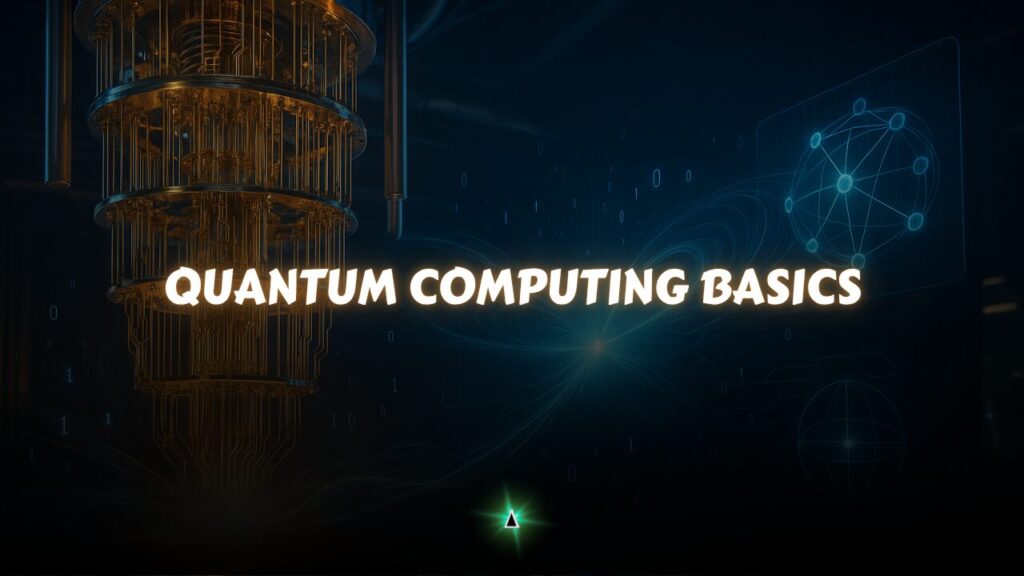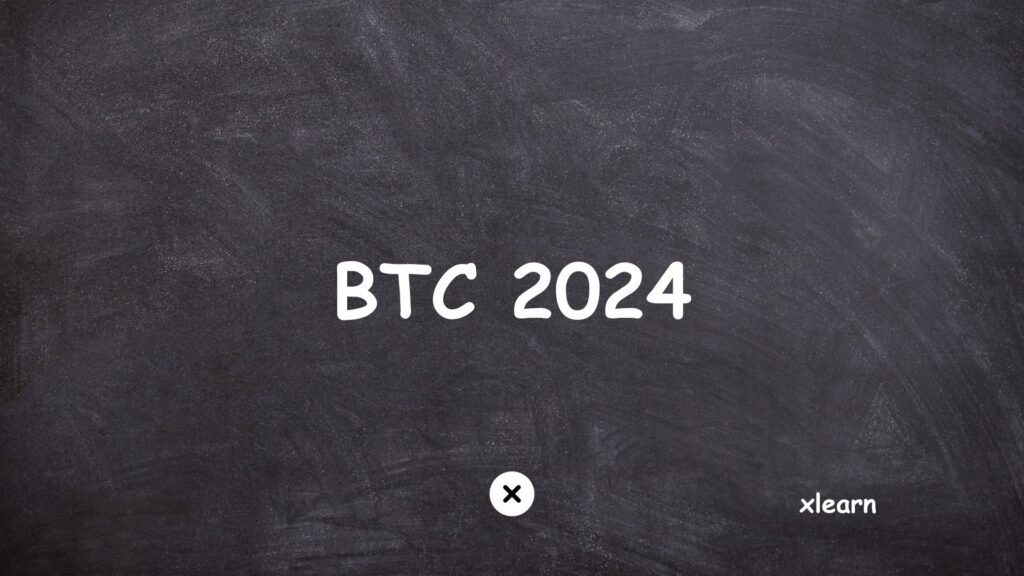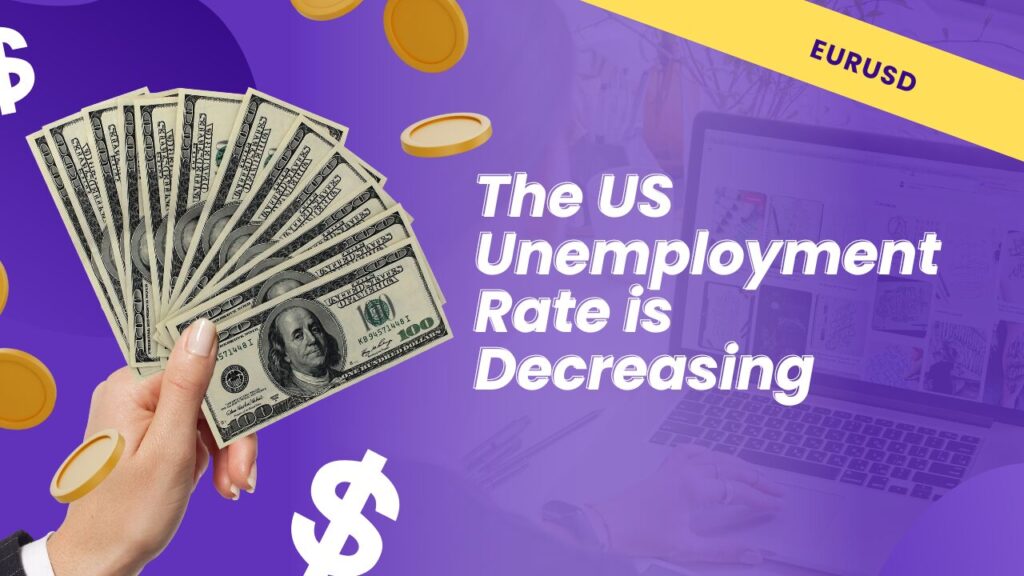For years, quantum computing sounded like something out of science fiction frozen particles, parallel states, and promises that always felt a decade away. But in 2025, that future is no longer theoretical.
Today, companies like IBM and Atom Computing have live quantum processors with over 1,000 qubits. Real algorithms are running in chemistry labs and financial models not just academic slideshows. And for the first time, major players have pinned actual dates on fault-tolerant quantum systems, with IBM aiming for 200 stable “logical qubits” by 2029.
Quantum is no longer just for physicists. Cloud platforms let you run live circuits with a few lines of Python. Whether you’re a developer, student, or tech-curious entrepreneur, this guide will walk you through the core concepts, current platforms, and what it really takes to get started.
The quantum era has quietly begun and understanding the basics now puts you ahead of the curve.
Table of Contents
Bits vs Qubits Explained
Picture this: you tap a light switch. It’s either off(0) or on(1) no mystery, no overlap. That’s a classical bit in action. Now imagine tossing a coin and freezing it mid-air. While it spins, you can’t honestly say it’s heads or tails; it’s hovering in a blur of both possibilities at once.
That suspended coin is the everyday metaphor for a qubit in superposition.
IBM puts it plainly:
“A qubit can behave like a bit… but it can also be a weighted combination of zero and one at the same time.”
Superposition — the spinning coin
Because a qubit holds a blend of 0 and 1 until you peek, two qubits can already represent four combinations, three qubits eight, and so on..
An exponential swell that lets quantum machines explore many branches of a calculation in parallel.
Entanglement — telepathic twins
Let two qubits briefly interact and they become entangled, meaning their destinies lock together no matter how far they drift apart. Measure one and you instantly know the state of the other Einstein’s “spooky action at a distance.”
MIT’s lecture notes describe it like this:
“As a result of one measurement the wave function is collapsed … and the result … can be detected by the other measurement, possibly at a remote location.”
Measurement — the shy performer
Here’s the catch: the moment you observe a qubit you force it to “choose” 0 or 1, collapsing the delicate quantum wave.
Qiskit’s docs remind developers that:
“Reading a qubit usually destroys entanglement and phase coherence.”
Why any of this matters
Superposition lets qubits try many paths simultaneously; entanglement knits those paths together so interference can cancel wrong answers and accentuate the right ones.
The upshot is mathematical shortcuts no classical chip can emulate efficiently.
Bits are dependable light switches; qubits are probability waves you can steer. until you look, when they politely snap back to being bits.
Bottom line: understanding these three ideas superposition, entanglement, and measurement collapse is enough to grasp why a modest fleet of well-behaved qubits could one day trounce billions of classical transistors on the right kind of problem.
Types of Qubits Explained: Superconducting, Trapped-Ion, Neutral-Atom, and Photonic Compared
Today’s quantum contenders fall into four clear camps. Each stores information in a different physical system, so their strengths and headaches don’t look the same.
Superconducting chips – IBM, Google, Rigetti

These qubits are tiny aluminium circuits patterned with the same lithography used for classical CMOS. Microwave pulses flip them in tens of nanoseconds, making them the fastest gates in the field. IBM’s Condor processor squeezed 1,121 qubits into one package, a milestone for scale.
Trade-off: the chips must sit in a dilution refrigerator at roughly 15 millikelvin, colder than deep-space background, and IBM pegs the energy cost of operating control lines and cryogenics at ≈ 35 W per qubit, meaning a 10 k-qubit machine would draw ~3.5 MW.
Trapped-ion chains – Quantinuum, IonQ
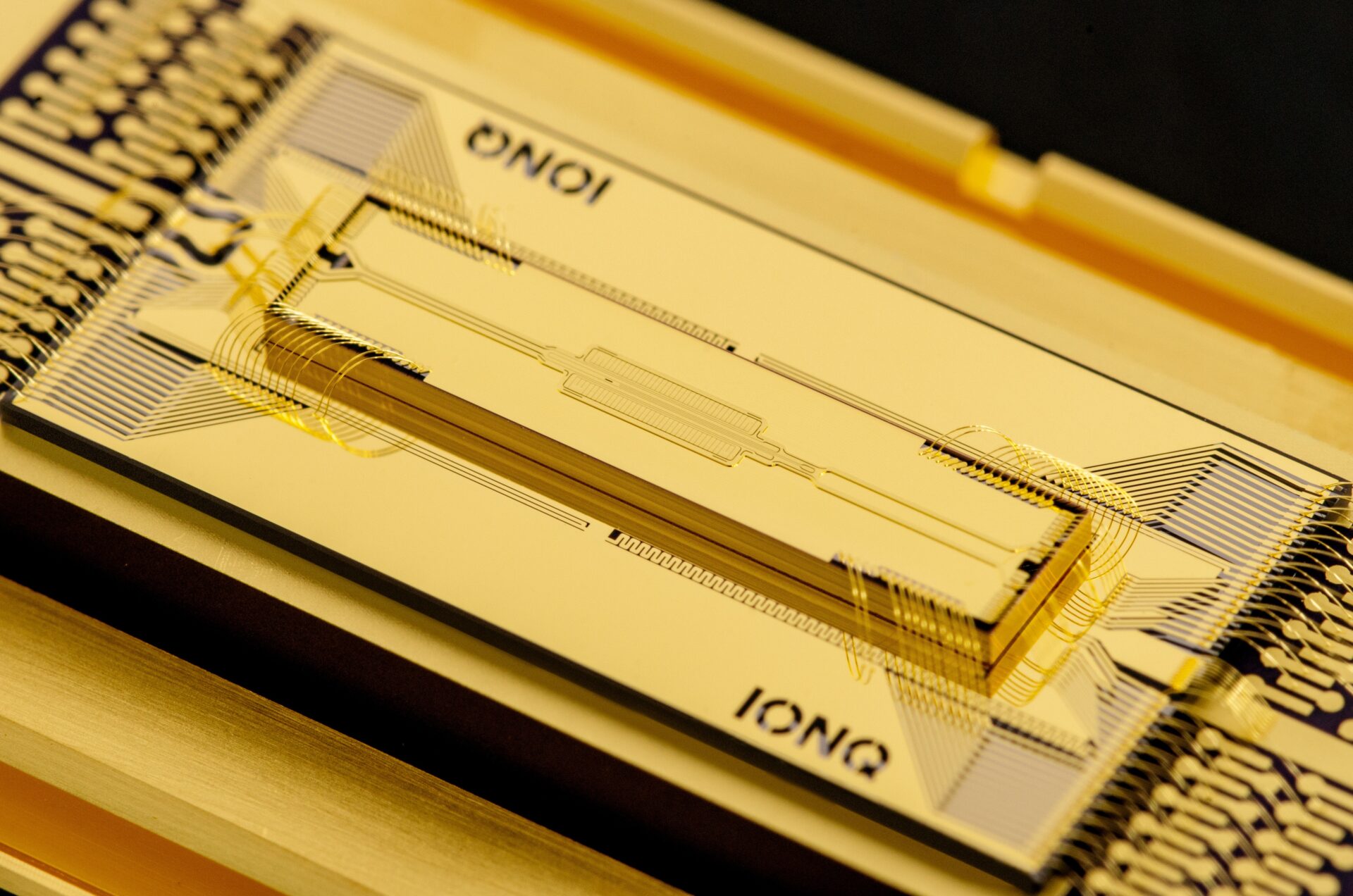
Here each qubit is a single ytterbium- or barium-ion floating in a room-temperature vacuum trap. Quantinuum’s H2-1 system offers 56 fully-connected qubits with two-qubit gate fidelity near 99.9 %. IonQ notes typical coherence times of seconds-to-minutes, orders of magnitude longer than solid-state qubits.
Trade-off: laser-driven two-qubit gates are slow (micro-milliseconds) and racks still need a few kilowatts for lasers and pumps; a compact demonstrator showed < 3.7 kW per rack.
Neutral-atom arrays – Atom Computing, QuEra, Pasqal
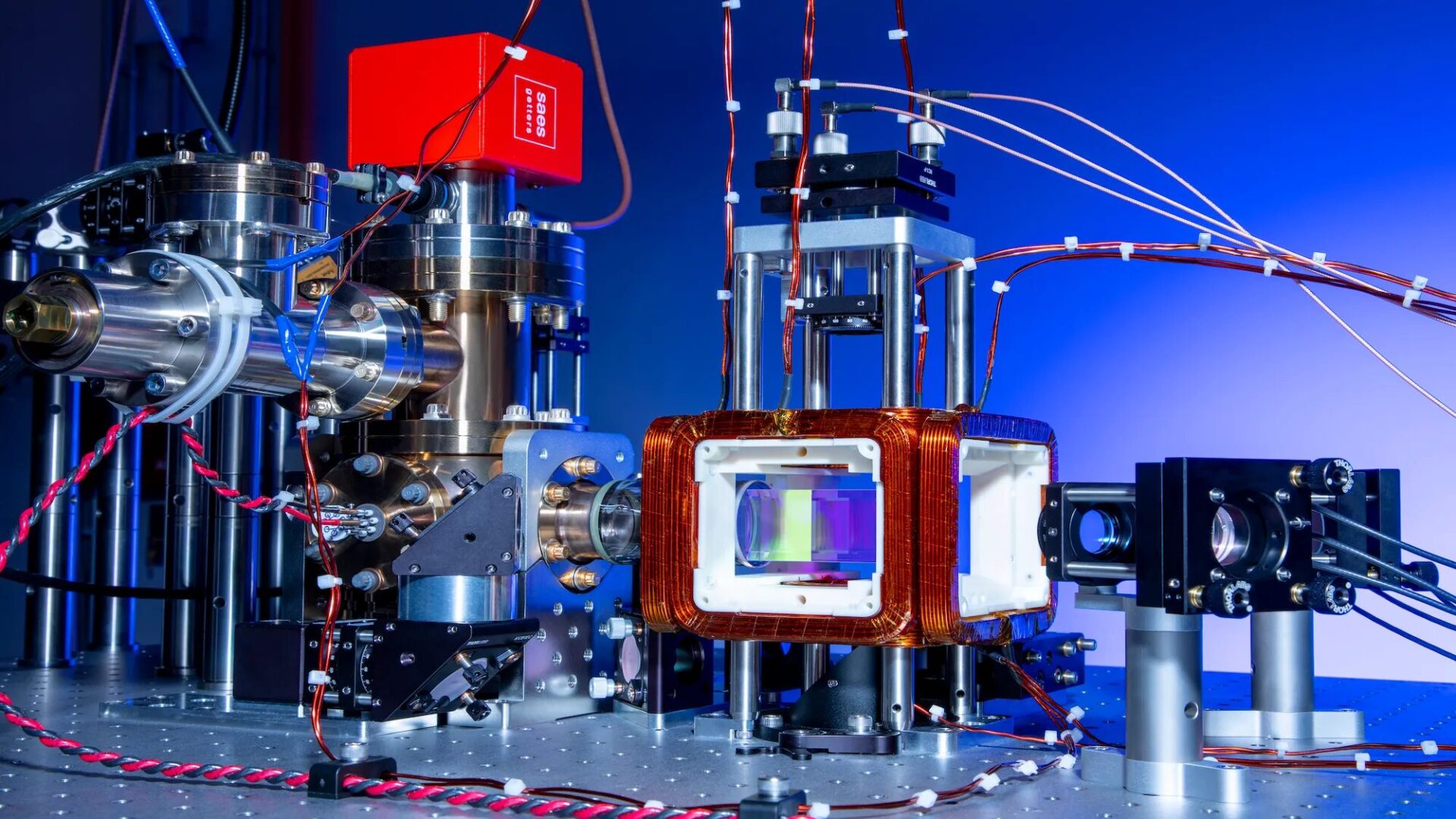
Instead of a one-dimensional ion string, neutral-atom platforms park thousands of rubidium or strontium atoms in a 2-D “tweezer” grid. Atom Computing has internally tested a 1,180-qubit array—the first four-digit neutral-atom machine. Large, regular grids make this approach attractive for error-correcting codes.
Trade-off: creating and steering hundreds of finely tuned laser beams is complex; crosstalk and calibration overhead are the current bottlenecks.
Photonic qubits – PsiQuantum, Xanadu
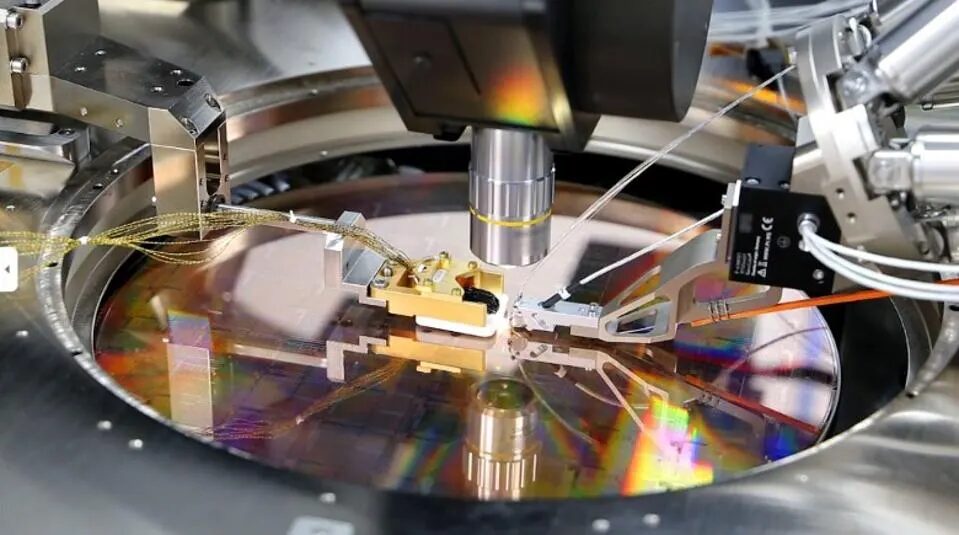
These systems encode qubits in single photons travelling through silicon-photonics waveguides. Because light doesn’t mind ambient temperatures, most of the hardware runs at room temperature, with only the superconducting detectors cooled to a modest 4K. The promise is wafer-scale manufacturing in existing fabs.
Trade-off: photons are slippery probabilistic “fusion” gates burn large overheads, and loss management is still a lab-stage problem.
Power in perspective
A modern trapped-ion rack (~3 kW) already draws three orders of magnitude less than Oak Ridge’s Frontier exascale supercomputer (24.6 MW) tackling the same class of brute-force simulations (link.aps.org, en.wikipedia.org).
Superconducting machines will narrow that gap as cryogenic engineering improves, but for now energy budgets vary as widely as the qubits themselves.
Bottom line:
- Superconducting = fastest gates, extreme cooling.
- Trapped ions = longest memory, slower pulses.
- Neutral atoms = biggest head-count, laser juggling.
- Photonic = room-temp promise, loss challenges.
Knowing which stack your algorithm will run on is the difference between an elegant demo and a pile of error bars.
The Core Principles Behind How Quantum Computers Actually Work
Classical computers juggle binary digits; quantum processors choreograph amplitudes. Three physical effects make that choreography possible and, in the right problem class, wildly more efficient than brute-force silicon.
1. Superposition — every point on the Bloch sphere
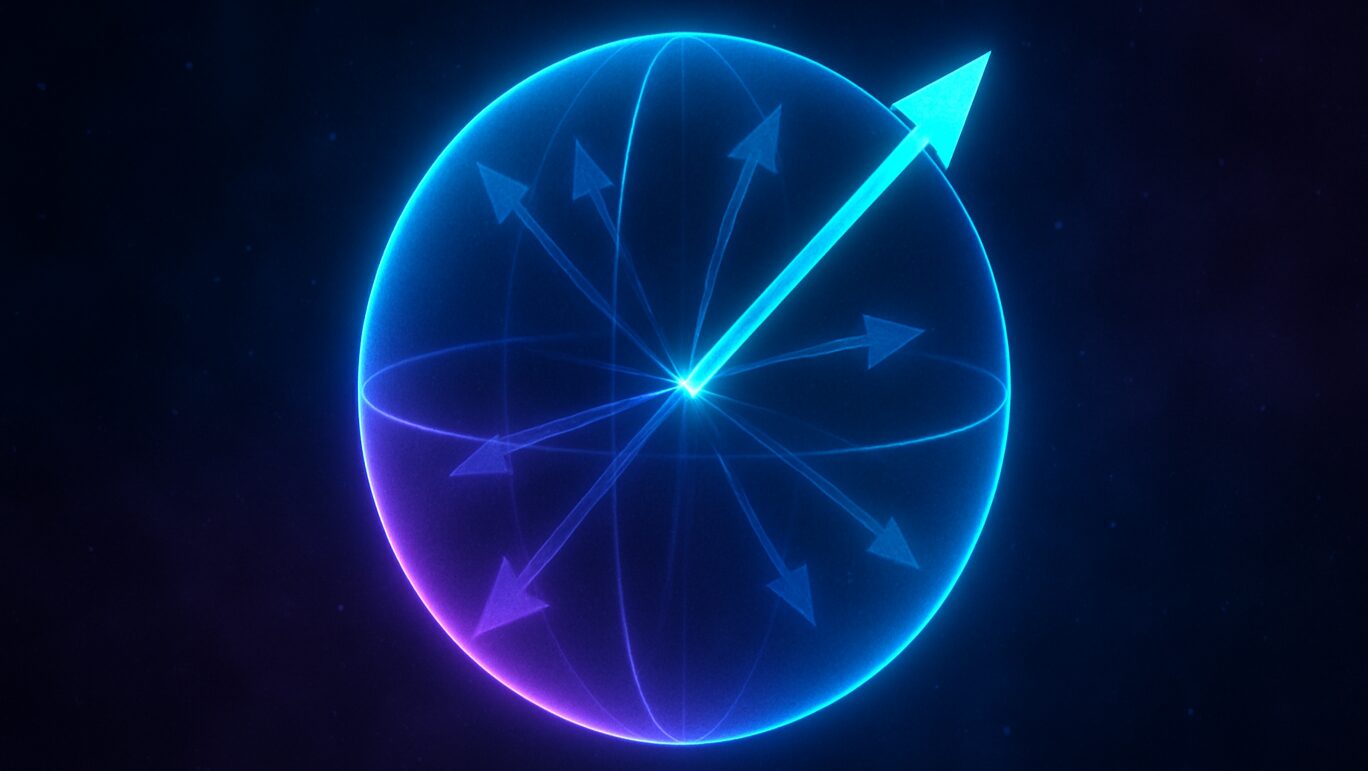
Think of a qubit as an arrow that can aim anywhere on a sphere, not just at the north-pole |0⟩ or the south-pole |1⟩. The latitude and longitude (complex numbers α and β) encode a weighted blend of both basis states. IBM’s learning portal notes that this mixture “is the basic reason a qubit can hold more information than a classical bit.”
Mathematically, an n-qubit register needs 2n complex amplitudes. Grow from 50 to 100 ideal qubits and the state space balloons from roughly a petabyte to numbers that eclipse all atoms in the visible universe. one reason classical simulators hit a hard wall long before real quantum chips do.
2. Entanglement — correlations that defy local realism
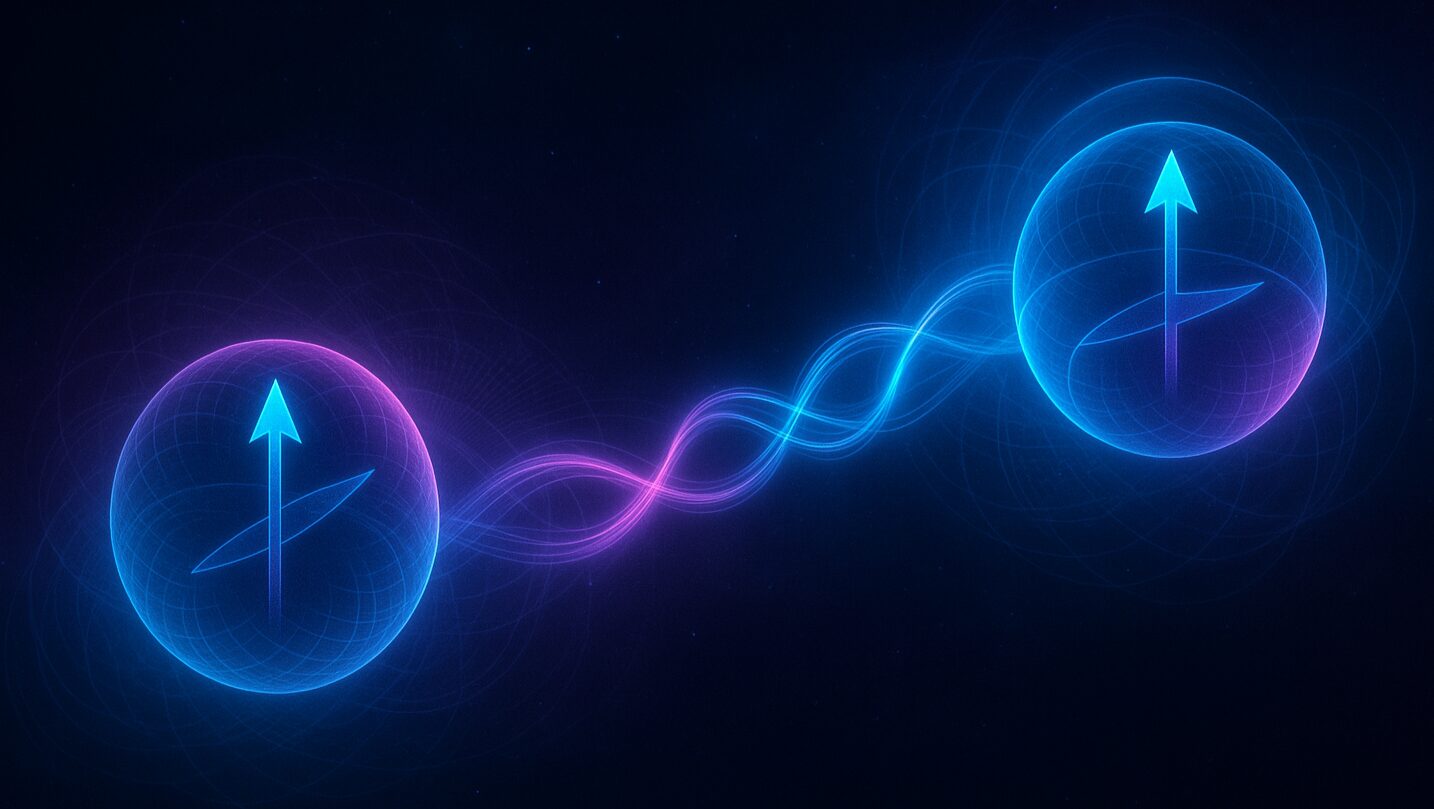
When qubits interact, their individual arrows fuse into a single, higher-dimensional arrow. Measure one qubit and you instantaneously pin down its partner, even if it’s on another continent. MIT’s Bell-inequality lecture notes show that such correlations violate every “hidden-variable” model Einstein hoped might save classical intuition.
You can test this yourself: IBM’s CHSH tutorial walks you through a live experiment where two cloud qubits return a Bell score above the classical limit, confirming genuine entanglement on production hardware.
Entanglement is the scaffolding for teleportation, super-dense coding, and the speed-ups in Shor’s factoring and Grover’s search. Without it, a quantum computer collapses to a fancy coin-flipper.
3. Interference — sculpting probability with amplitudes
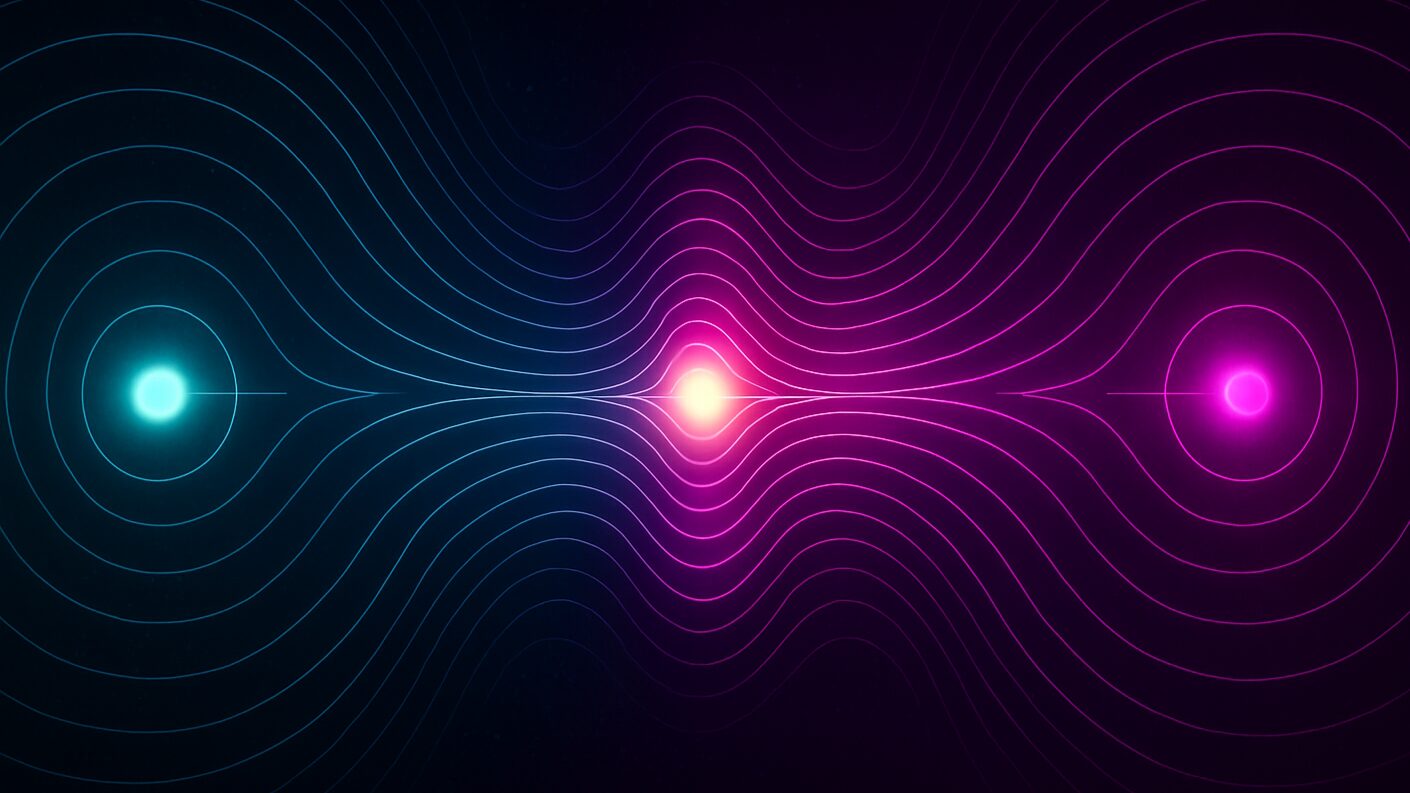
Quantum amplitudes behave like water waves: crests add, crest-trough pairs cancel. Feynman put it formally as

meaning the probability of an event depends on the sum of amplitudes, not the sum of probabilities.
Algorithms exploit that rule. Grover rotates the combined state so that “wrong” answers interfere destructively while the target answer’s amplitude doubles each iteration. Shor uses a quantum Fourier transform to let peaks appear only at numbers sharing the hidden period that breaks RSA. The circuit doesn’t “try every factor”; it cancels the wrong ones in bulk.
Why the trio matters
Superposition supplies an exponential workspace, entanglement lets distant qubits act as one coordinated object, and interference sculpts the landscape so good answers dominate when you finally measure.
Master these three ideas and you have the conceptual toolkit behind every headline-grabbing quantum result to date.
Five Quantum Algorithms that Matter in 2025
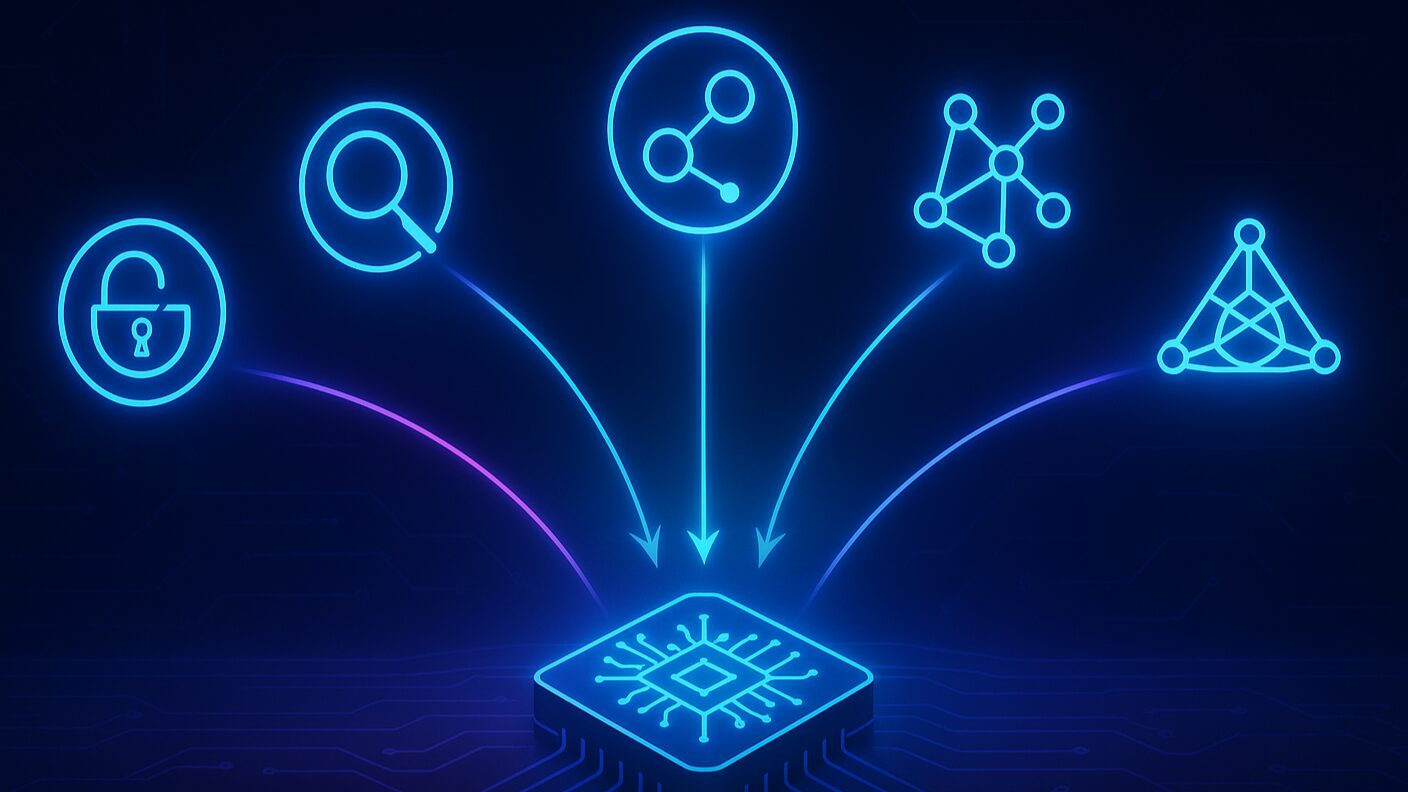
Below are the only five routines you’ll hear again and again at conferences, in vendor blogs, and inside company pilot projects. Each entry tells you what the algorithm is for and how far it has really progressed on today’s hardware. no hype, just the publicly documented milestones.
1. Shor’s Factoring Algorithm
What it does – Finds the prime factors of very large integers exponentially faster than the best classical methods, threatening RSA- and ECC-based encryption.
2025 status – Still laboratory-scale. The cleanest fully-quantum run so far factored 21 on an IBM superconducting chip with five qubits, confirming the core order-finding routine but nowhere near RSA-2048. Security analysts estimate “millions of fault-tolerant logical qubits” before real-world keys fall. (arxiv.org, medium.com)
2. Grover’s Quadratic-Speed Search
What it does – Locates a marked item in an un-indexed list in √N steps instead of N; drop-in speed-up for brute-force searches and pattern matching.
2025 status – Silicon Quantum Computing executed Grover’s routine on a four-qubit silicon processor with 93 % success—98.9 % of the ideal theoretical limit—even without error correction. Great fidelity, but the data set contained four items, not 4 trillion. (thequantuminsider.com)
3. Variational Quantum Eigensolver (VQE)
What it does – Uses a hybrid quantum-classical loop to estimate a molecule’s ground-state energy; chemistry, materials and battery design care about that number.
2025 status – IonQ and Hyundai Motor are running VQE workflows on trapped-ion hardware to study lithium-based battery cathodes, aiming to shorten lab trials for next-gen EV packs. Runs use tens of high-fidelity qubits—already beyond what exact classical methods can handle for those specific molecules. (ionq.com)
4. Quantum Approximate Optimization Algorithm (QAOA)
What it does – Attacks hard combinatorial problems (vehicle routing, portfolio balancing, power-grid scheduling) with shallow circuits that fit today’s error budgets.
2025 status – Pilot studies show QAOA reaching classical-quality solutions on toy instances of vehicle-routing and grid-balancing tasks; an arXiv pre-print details a gate-based demo for quantum-assisted routing on current cloud hardware. Larger instances will need hundreds of low-noise qubits, but scaling looks straightforward as devices like IBM’s Condor and Atom’s 1 k-qubit arrays come online. (medium.com, arxiv.org)
5. Quantum Kernels for Machine Learning
What they do – Map classical data into an extra-rich quantum feature space where simple classifiers (e.g., SVMs) can separate categories that stump classical kernels.
2025 status – A Nature Photonics paper (June 2025) reported a room-temperature photonic chip whose quantum kernel outperformed top-flight Gaussian and neural-tangent kernels on a benchmark binary-classification task—small data, but statistically sound. Scaling to ImageNet-sized sets will demand brighter photon sources and lower loss, yet the proof-point is now peer-reviewed.
Take-away: All five algorithms run today, but only on limited problem sizes—useful for benchmarking, chemistry proofs, and early logistics pilots rather than cracking global crypto or routing every FedEx truck. Hardware road-maps, not theory, will decide when each one flips from demonstration to daily tool.
Quantum Error Correction: Why Qubit Stability Matters More Than Qubit Count
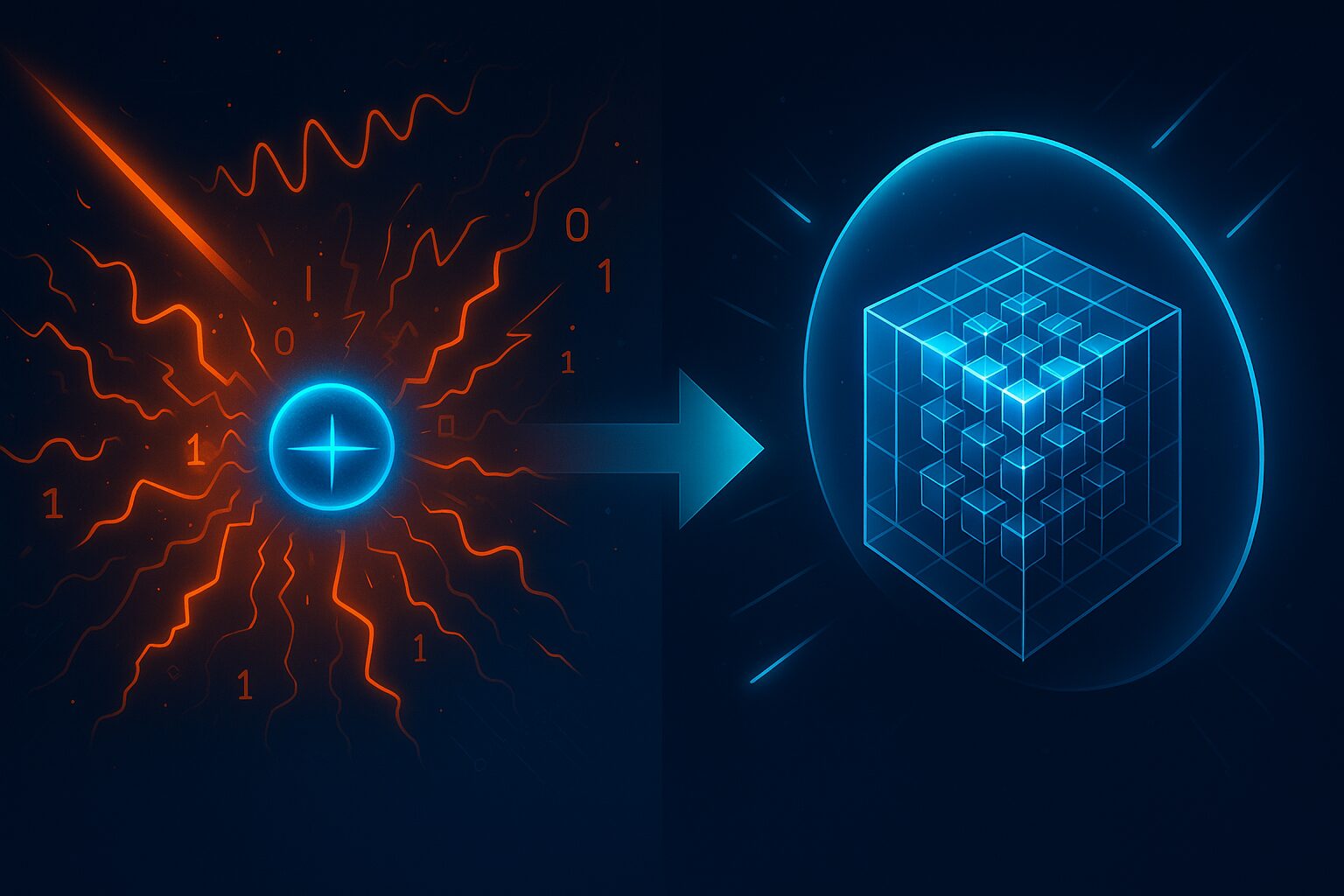
A classical transistor flips billions of times before it glitches; a qubit can lose its state in microseconds. Heat, stray microwaves, even cosmic-ray muons nudge it off course. That fragility is why every serious roadmap now revolves around quantum-error correction (QEC) rather than raw qubit counts.
Why qubits misbehave
- Decoherence. Superconducting qubits retain phase for ≈ 100 µs in state-of-the-art devices; trapped-ion qubits stretch into seconds, but both are far shorter than typical algorithm runtimes.
- Gate & measurement noise. Single-qubit gates hover around 1 × 10⁻³ error probability; two-qubit gates are 3–10 × 10⁻³ on mainstream hardware. Above ~1 × 10⁻² the dominant QEC codes simply can’t keep up.
- Correlated “burst” errors. A 2025 Nature Communications study tied simultaneous flips across a 63-qubit chip to muons and γ-rays, showing bursts that violate the “independent error” assumption behind most codes.
How we fight back
- Surface codes. They arrange physical qubits in a checkerboard; local parity checks spot and patch errors without ever reading the data itself. Google’s 2023 experiment proved that enlarging the code from distance-3 to distance-5 reduced the logical error rate, a first for any solid-state platform. (nature.com, arxiv.org)
- From physical to logical qubits. Rough rule-of-thumb: ~1,000 good physical qubits → 1 sturdy logical qubit capable of thousand-gate depth. Exact ratios depend on the physical error rate and the code distance you pick.
- Shielding & filtering. Labs now add lead plates and muon detectors to fridges after direct evidence that cosmic rays create correlated quasiparticle bursts. Mitigation cut those events by ~40 % in follow-up tests. (arxiv.org)
Where the roadmaps point
IBM’s Starling system, slated for 2029, targets 200 logical qubits that can execute 100 million error-corrected gates—enough depth for meaningful chemistry and optimization workloads. That date and spec appear in IBM’s public fault-tolerance roadmap and recent press briefing.
Analysts from McKinsey and QED-C label 200 logical qubits the tipping point for what they call “quantum utility,” when running a job on a quantum cloud becomes cheaper or faster than any classical shortcut.
Takeaway: speed isn’t the main hurdle anymore—error rates are. Winning the cosmic-ray lottery, perfecting surface codes, and scaling to thousands of physical qubits per logical block are the milestones that separate today’s demo circuits from tomorrow’s fault-tolerant machines.
How to Run Your First Quantum Circuit in Qiskit: A Beginner’s Guide to Superposition

The quickest way to see superposition is to run a single-qubit test in IBM Quantum Lab (the free, browser-based IDE) or in a local Python notebook.
# Install once: pip install qiskit --quiet
from qiskit import QuantumCircuit, execute, Aer # core tools
qc = QuantumCircuit(1, 1) # 1 qubit, 1 classical bit
qc.h(0) # Hadamard gate → |0⟩+|1⟩ (creates superposition)
qc.measure(0, 0) # collapse & record result
print(execute(qc,
Aer.get_backend("qasm_simulator") # noiseless simulator backend
).result().get_counts())
What the code does
QuantumCircuit(1, 1)– allocates one qubit and one classical register. A quantum circuit is just an ordered list of gates and measurements. (qiskit.org)qc.h(0)– the Hadamard gate turns |0⟩ into (|0⟩+|1⟩)/√2, the textbook superposition used in almost every demo. IBM’s Composer tutorial calls H “the basic way to put a qubit into a 50-50 state.” (learning.quantum.ibm.com)qc.measure(0, 0)– copies the qubit’s final state into the classical bit; reading forces the quantum state to pick 0 or 1.execute(…, Aer.get_backend("qasm_simulator"))– runs the job on Qiskit Aer’s built-in QasmSimulator, a noise-free backend that returns exact statistics for ideal gates. (qiskit.org)
Run the cell (or click Run in IBM Quantum Lab’s notebook view). The printed dictionary will look something like:
{'0': 507, '1': 517}
after the default 1,024 shots. Numbers will vary, but both keys hover around 500 counts—roughly 50 % |0⟩ and 50 % |1⟩—exactly what superposition predicts.
Tip: add
from qiskit.visualization import plot_histogram; plot_histogram(_result.get_counts())
to see the bar chart inline. Qiskit’splot_histogramhelper renders a Matplotlib figure automatically. (qiskit.org)
Taking it to real hardware
If you create a free IBM Quantum account and save your API token, you can swap the simulator for a real 127-qubit Eagle device in two extra lines:
from qiskit_ibm_runtime import QiskitRuntimeService
service = QiskitRuntimeService(channel="ibm_quantum") # authenticate once
backend = service.backend("ibm_hanoi") # 27-qubit Eagle Falcon r3
print(execute(qc, backend, shots=1024).result().get_counts())
Because physical qubits are noisy, you’ll see slight bias (e.g., 55 % / 45 %) and occasional read-out errors—that’s decoherence in action and the reason error-correction is such a big deal.
Bottom line: three lines of code are enough to watch a qubit flip into superposition and collapse back, making the abstract theory visible on your own screen.
Myths & Misconceptions in Quantum Computing
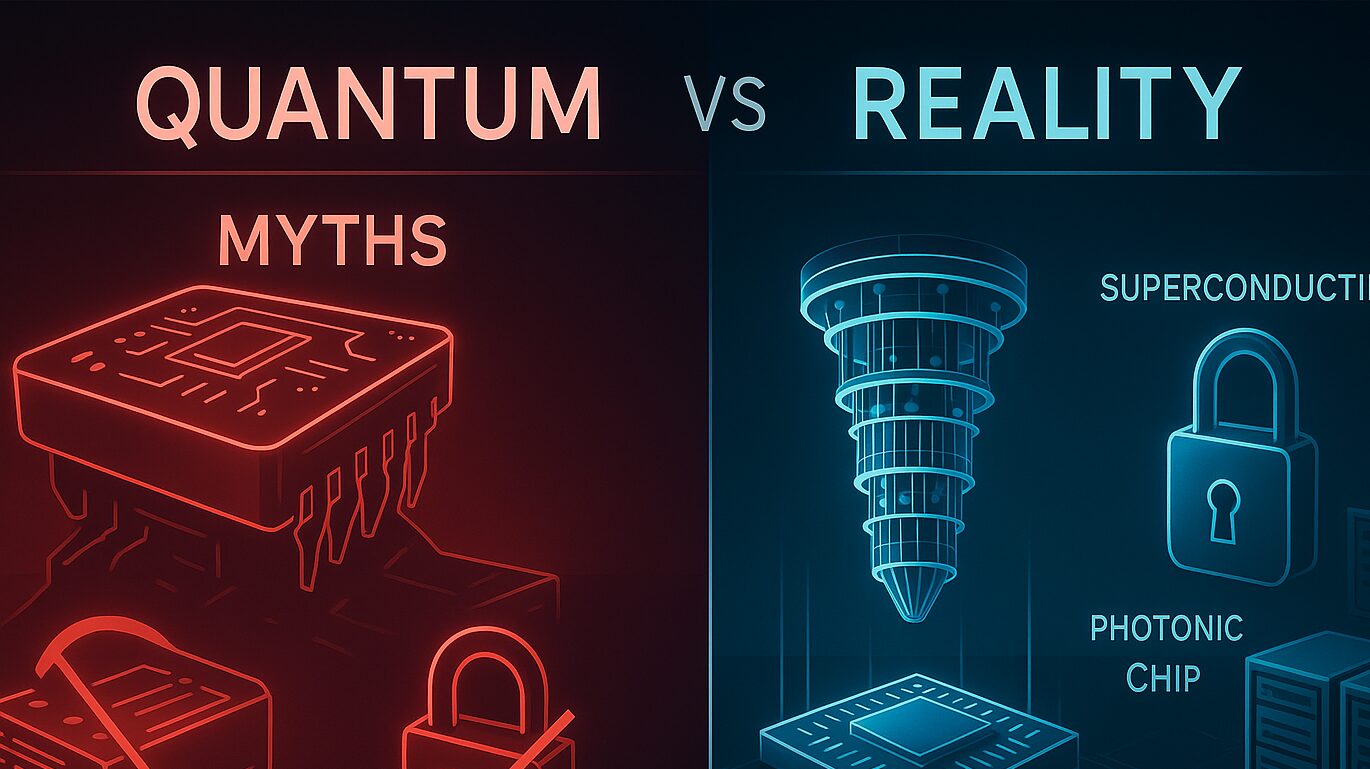
Myth 1 – “Quantum computers will crush classical machines at everything.”
Quantum circuits only outpace classical ones on certain mathematical structures (period-finding, unstructured search, quantum-physics simulation, some optimisation tasks).
IBM’s own research blog is blunt: “Quantum computers won’t beat their classical counterparts simply because the hardware is different.”
In practice, today’s best chips tackle jobs that fit neatly into those niches; for spreadsheets, video games or web servers, classical silicon remains king.
Myth 2 – “RSA could fall any day now.”
Breaking a 2048-bit RSA key still needs millions of high-fidelity qubits plus full error-correction. A UK-NCSC study puts the requirement at ≈ 20 million physical qubits under realistic noise assumptions.
Google’s newest Willow processor carries 105 qubits; even its designers say it is “nowhere near” the scale required to crack modern crypto.
The biggest universal chip on record, IBM’s Condor, sits at 1,121 noisy qubits—three orders of magnitude short.
Myth 3 – “Qubits are just transistors with a higher clock speed.”
Speed-ups come from probability amplitudes evolving in parallel, not faster ticking. IBM’s public primer explains that quantum algorithms “manipulate information in a way inaccessible to classical computers,” exploiting superposition, entanglement and interference—not GHz cycles.
Myth 4 – “All quantum computers must run at absolute zero.”
Superconducting qubits do need dilution fridges at ~10 mK, but photonic platforms operate largely at room temperature; only their single-photon detectors sit at a comparatively balmy 4 K.
PsiQuantum’s engineering brief states plainly: “Photonic qubits do not feel heat, do not decohere and can be operated … at room temperature.”
Trapped-ion systems, meanwhile, float atoms in a near-vacuum at room temperature, using lasers instead of cryogenics for control.
Myth 5 – “Quantum supremacy means we’re already past classical limits everywhere.”
Demonstrations such as Google’s 2019 Sycamore experiment or 2025 optimisation tests show advantage only on carefully chosen, noise-tolerant problems.
For broad workloads you still need fault-tolerant devices—the very machines IBM aims to deliver with 200 logical qubits by 2029. Until then, supremacy headlines mark scientific milestones, not the end of classical supercomputers.
Bottom line: quantum computing is astonishing, but its power is targeted, its timelines are decades-scale for breaking mainstream encryption, and its hardware landscape is more diverse (and warmer) than the chilly chandelier photos suggest.
Quantum Computing Roadmap 2025 → 2030
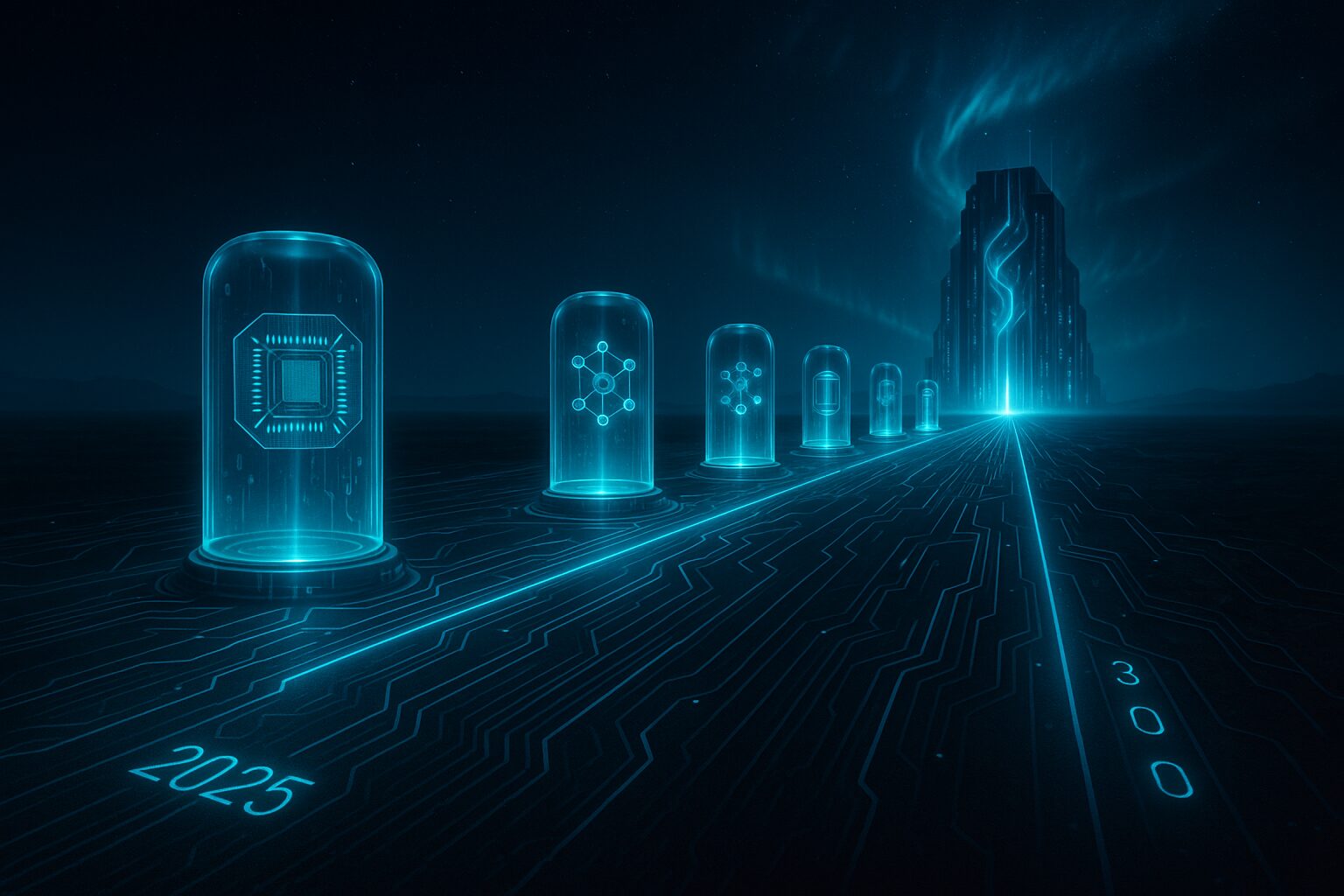
2025 — The 1-k-Qubit Cloud Arrives
- IBM “Condor” (1,121 superconducting qubits) and Atom Computing’s 1,180-qubit neutral-atom array both open for cloud experiments this year. (ibm.com, atom-computing.com)
- Google’s Willow and Quantinuum’s H2 chips hit the first “break-even” point where a logical qubit outperforms the underlying physical qubits, proving error-correction works in practice. (quantinuum.com)
2026 — Early Advantage Pilots
- Pharma, battery, and finance labs start running production test-cases (VQE for lithium-ion cathodes; QAOA for portfolio stress tests) on 50- to 200-qubit machines. IonQ × Hyundai’s battery-chemistry program is the poster child. (ionq.com)
- A McKinsey tech-trends note flags “quantum advantage pilots” as one of the five enterprise experiments to watch this year. (mckinsey.com)
2027 — Double-Digit Logical Qubits
- Quantinuum projects ~100 logical qubits on its H-series hardware; third-party trackers list this as the first platform capable of running >1,000 error-corrected gates. (introtoquantum.org)
- Google Quantum AI focuses on scaling its surface-code lattice past the 1,000-physical-qubit mark, a prerequisite for ≥10 logical qubits. (quantumai.google)
2028 — Modular Fault-Tolerance Demo
- IBM plans to showcase magic-state injection across multiple cryomodules, the last missing ingredient before a full Starling-class system. (ibm.com)
2029 — IBM Starling Takes Flight
- 200 logical qubits executing 100 million error-corrected gates in a single run, delivered from a new Poughkeepsie data center. IBM labels this the threshold of “quantum utility.” (newsroom.ibm.com, barrons.com)
2030 — Hybrid HPC Becomes Normal
- Research-and-Markets forecasts the hybrid quantum–classical market to hit ≈ USD 4–5 billion by 2030 as supercomputing centers bolt quantum accelerators next to GPU racks. (globenewswire.com, researchandmarkets.com)
- Expect chemistry toolchains, supply-chain optimizers, and Monte-Carlo risk engines to call a quantum API in the background—no PhD required on the user side.
Bottom line: the story is no longer “count the qubits.” It’s a march from today’s 1-k-qubit cloud chips to a few-hundred logical qubits by decade’s end, with hybrid workflows becoming a standard part of HPC budgets around 2030.
FAQ in Quantum Computing
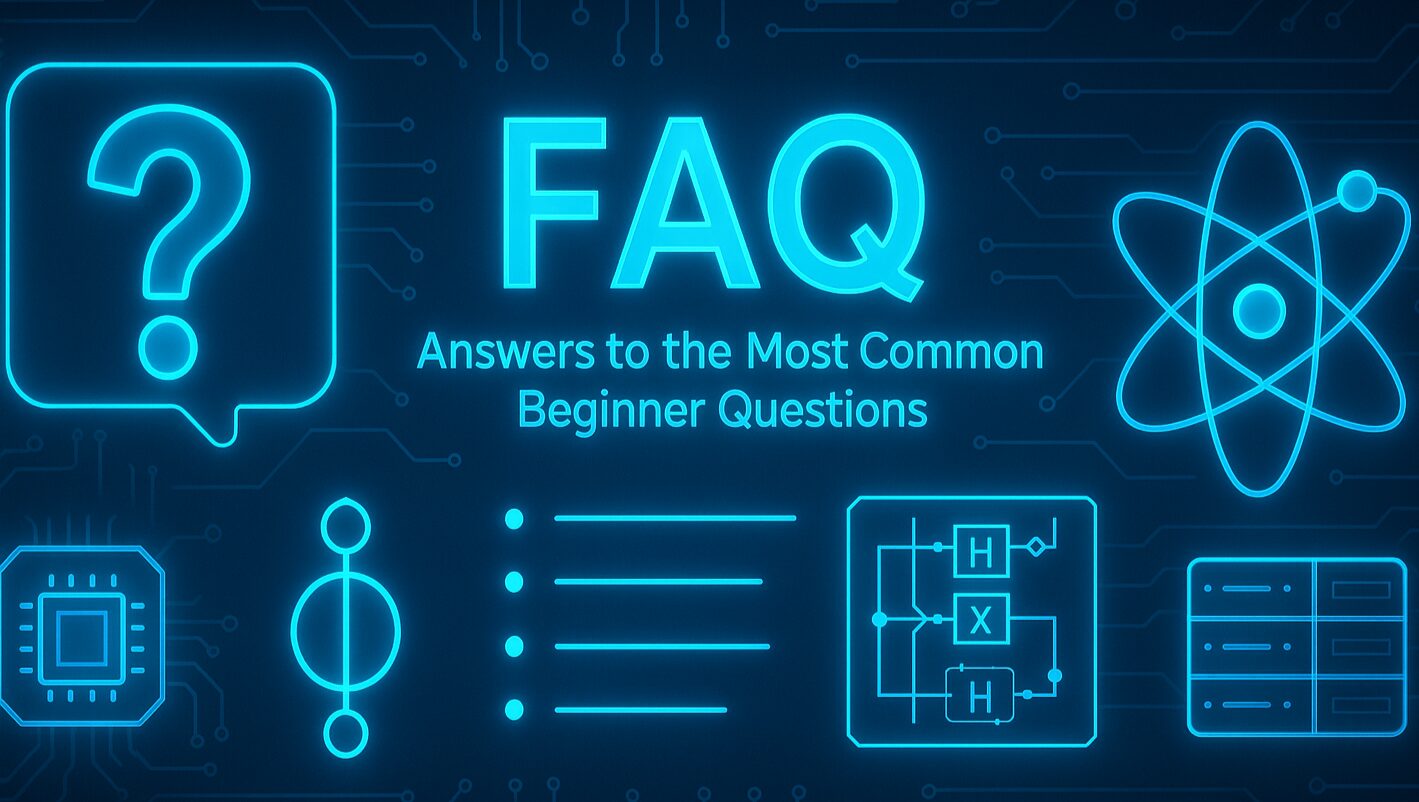
1. What exactly is a qubit?
IBM defines a qubit as “the basic unit of information in quantum computing … a quantum-equivalent of the classical bit that can be a weighted combination of 0 and 1 until measured.”
2. How many qubits would it really take to break RSA-2048?
The best open-literature estimate today is about 4 000 error-corrected (logical) qubits, which maps to tens of millions of physical qubits once you include error-correction overhead. We are still three to four orders of magnitude short of that hardware.
3. How cold do superconducting quantum computers have to run?
Chips such as IBM’s Condor sit inside dilution refrigerators at ≈ 10–15 millikelvin, only a hair above absolute zero; new “autonomous” cryo-fridges demonstrated in 2025 push that record even lower.
4. Do quantum computers save energy compared with classical supercomputers?
Yes for some workloads. Frontier, the world’s fastest classical machine, draws ≈ 21 MW continuously, while experimental 1 000-qubit quantum racks operate in the kilowatt range—even after accounting for cryogenics.
5. When can I buy a laptop-sized quantum computer?
No vendor has a credible consumer timeline. Industry trackers and academic reviews put first commercially useful million-qubit systems in the 2035–2040 window; handheld devices are farther still.
6. Do I need a PhD in physics to start coding quantum circuits?
No. Python toolkits such as Qiskit and Cirq wrap the physics behind familiar APIs; IBM’s free online textbook is pitched at undergraduates and self-taught developers.
7. Which programming language should I learn first?
Python dominates because the major SDKs—Qiskit, Cirq, PennyLane, D-Wave Ocean—are Python libraries. Surveys list it as the entry point for >80 % of new quantum developers.
8. What jobs exist in quantum computing today?
The 2025 hiring boards cluster around five roles: quantum software engineer, algorithm / QML researcher, error-correction specialist, cryogenic-hardware or microwave engineer, and quantum-cloud product manager. Industry analysts expect demand to accelerate through 2030.
9. Will quantum computers replace classical ones?
No—IBM’s own primer stresses that quantum processors will “work alongside” classical CPUs and GPUs, tackling only the narrow classes of problems where they excel.
10. What can quantum computers solve right now?
Small-scale chemistry (variational energy estimates), toy logistics optimisations, and provably random number generation—all on devices with fewer than 200 qubits. Enterprise pilots in battery R&D and portfolio optimisation are already under way, but still run side-by-side with classical solvers.
11. Is there an environmental downside to all that cooling hardware?
Cryogenic plants are energy-intensive, yet even a large dilution refrigerator draws <50 kW—tiny next to megawatt-class classical supercomputers. As qubit densities rise, the energy-per-qubit figure is trending downward.
Quantum Computing Resources to Learn, Code, and Stay Updated in 2025
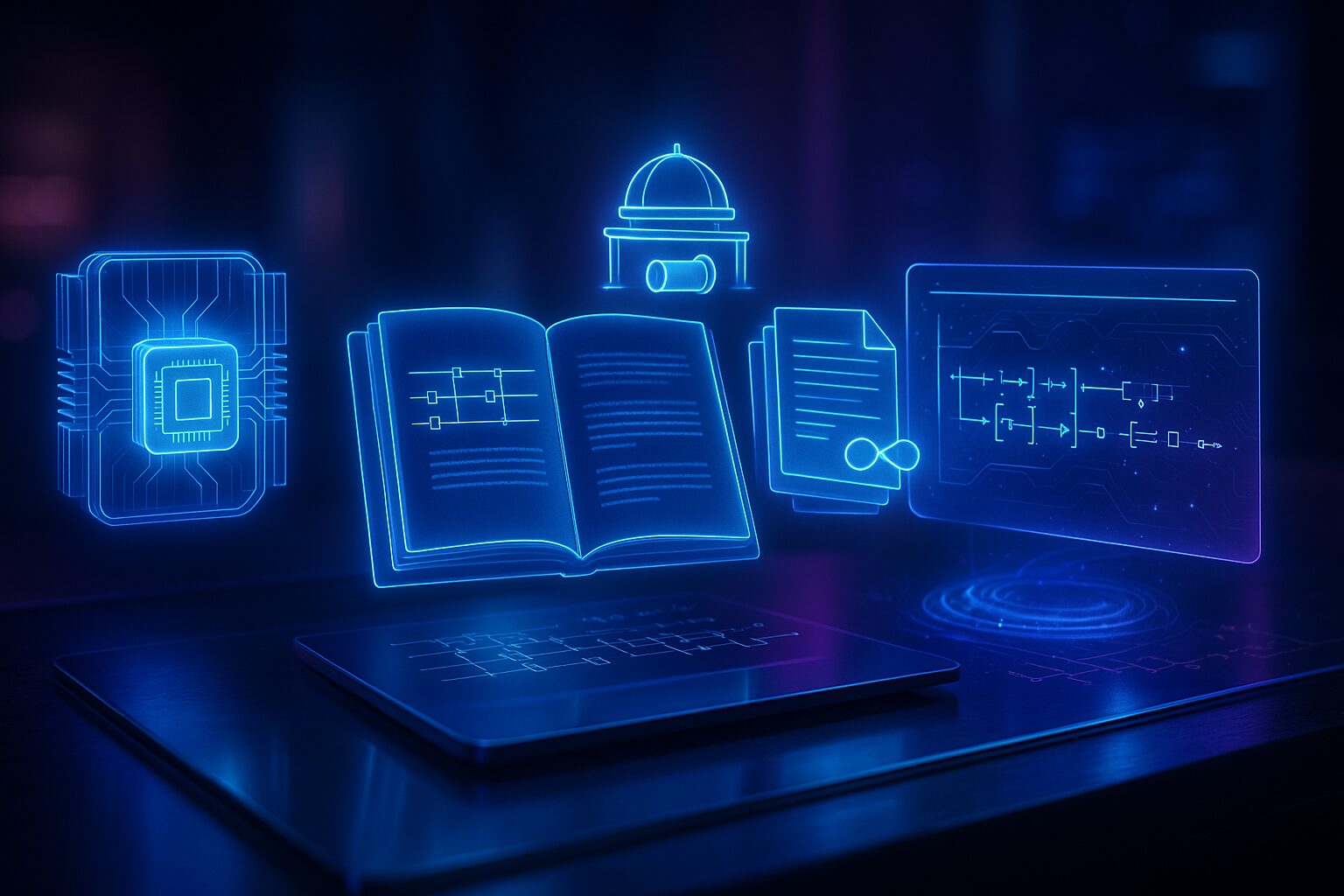
- IBM Quantum Platform & Lab
Create a free account and you get 10 minutes of runtime every month on real processors via a browser IDE. If you need more horsepower, the Pay-As-You-Go plan starts at about $96 per minute for the larger chips. - Qiskit Textbook
IBM keeps the entire beginner-to-advanced curriculum open-source under the Apache 2.0 licence. Each chapter mixes short explanations with runnable notebooks, so you can edit code and hit “Run” without leaving the page. - Qiskit documentation & example notebooks
When you want to move beyond “Hello World,” the official docs walk you through helpers such asplot_histogram, circuit-drawing utilities, and full VQE/QAOA demos you can copy-paste. - MIT xPRO – “Quantum Computing Fundamentals”
An instructor-led, certificate course aimed at engineers and managers. The program runs two four-week modules (8 weeks total), 4–6 hours a week, and the next cohort begins 22 September 2025 with tuition around US $2.4k. - arXiv quant-ph daily feed
If you like raw research, subscribe to arXiv’s quant-ph mailing list or RSS stream for a free digest of every new pre-print, delivered the day it’s uploaded. - Quantum Computing Report
A long-running industry tracker that logs funding rounds, hardware milestones, government grants, and hiring trends—handy if you care about the business side as much as the physics.
If you do nothing else, open IBM Quantum Lab, run the single-qubit superposition circuit from Section 7, and skim Chapter 1 of the Qiskit Textbook. Those two steps will demystify more jargon than a week of scrolling X threads.
Conclusion
Bottom line: quantum computing is no longer a distant dream it’s here, growing fast, and open to anyone curious enough to code their first circuit.
2025 is the year quantum computing shifts from theory to early utility. With IBM’s 1,121-qubit Condor and Atom’s 1,180-qubit neutral-atom array live on the cloud, four-figure machines are no longer a future promise they’re accessible now.
Just as important, the industry is moving past raw qubit counts. IBM’s Starling system, set for 2029, targets 200 logical qubits and 100 million error-corrected gates a concrete step toward fault-tolerant, useful quantum computing.
Quantum systems still shine in specific areas: factoring, search, optimisation, and quantum chemistry. Everything else remains classical for now. But the real bottleneck isn’t speed it’s error correction, and solving it is the key to scalability.
The best part? You don’t need to wait. Anyone can start experimenting today using IBM Quantum’s free tier and open-source tools like Qiskit. The skills you build now will compound as hardware rapidly improves.
